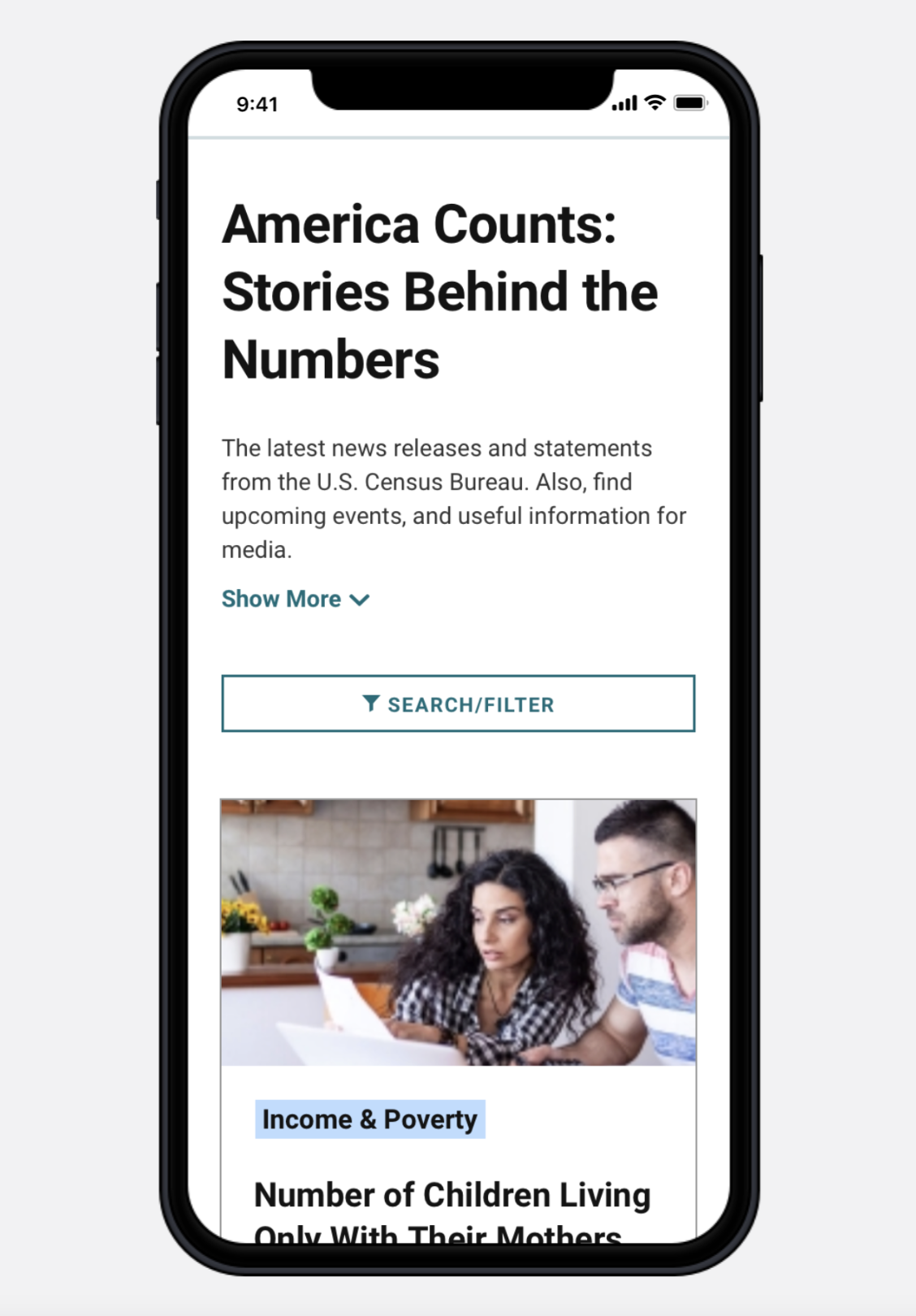
Census.gov
Lead UX Designer
Re-design of a responsive site with modular design components
Our client approached us with a request for a user interface refresh. In response, we not only developed a new interface with a corresponding design system but also leveraged site analytics to re-configure the information architecture to enhance the website's navigation and usability.
Given the dynamic nature of the website, with frequent publications added by various authors and developers, we strategically crafted the design around modular components. This approach ensures ease of configuration for contributors, facilitating a seamless experience for daily updates.
One of the first things we tackled was leveraging existing census.gov personas to conduct more research around our users. In doing so, we discovered the need to broaden our thinking of how people approach using census.gov. Just like all people are multi-faceted, so are the users of the site. We found that not all users could be placed into a “persona-box”, and that many personas had overlapping wants, needs, and motivations when visiting the website. These findings influenced us to take a mindset-based approach rather than a persona-based approach for the re-design.
User Mindsets
Research Insights and Site Analytics
The team conducted interviews with internal developers, authors, and external users. These research findings were subsequently cross-referenced with detailed site analytics to construct a comprehensive story for site enhancement recommendations.
Information Architecture & Navigation
The team leveraged our newly defined mindsets, site analytics, and card sorting activities to re-define the site structure and navigation between pages.
User Interface and Design System
Once the new information architecture was established, we began the process of re-designing all pages aimed at enhancing the experience for both end users and internal authors and developers. It was important to remain mindful of the development effort, so stakeholders were always presented with impact analyses for each page and component re-design.
In parallel, we produced style guides and component libraries to support developers in their work.












